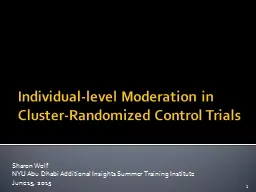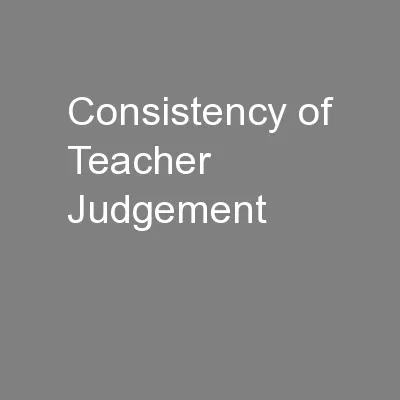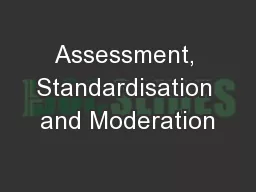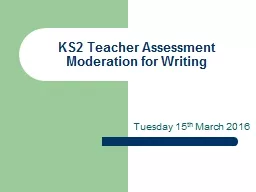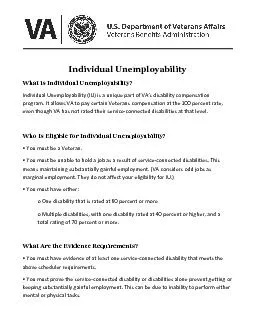PPT-Individual-level Moderation
Author : alida-meadow | Published Date : 2017-05-19
in ClusterRandomized Control Trials Sharon Wolf NYU Abu Dhabi Additional Insights Summer Training Institute June 15 2015 1 Outline Conceptual overview Analytic
Presentation Embed Code
Download Presentation
Download Presentation The PPT/PDF document "Individual-level Moderation" is the property of its rightful owner. Permission is granted to download and print the materials on this website for personal, non-commercial use only, and to display it on your personal computer provided you do not modify the materials and that you retain all copyright notices contained in the materials. By downloading content from our website, you accept the terms of this agreement.
Individual-level Moderation: Transcript
Download Rules Of Document
"Individual-level Moderation"The content belongs to its owner. You may download and print it for personal use, without modification, and keep all copyright notices. By downloading, you agree to these terms.
Related Documents

